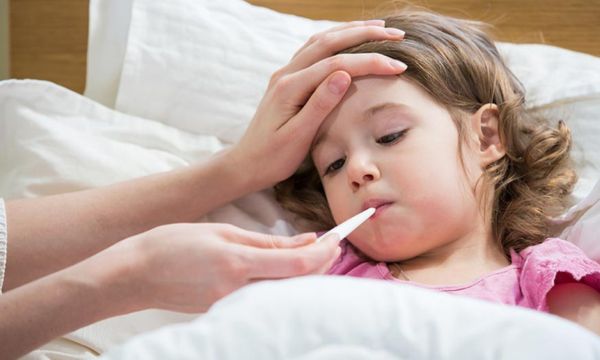The Importance of Physical Activity in Children
In today’s fast-paced, technology-driven world, the importance of physical activity for children cannot be overstated. With the rise of smartphones, tablets, and video games, children are spending more time indoors and less time doing physical activities. This trend is worrying because it could have serious consequences for the health and well-being of our youngest generations.
Ad
Physical activity is not just about strengthening muscles and bones; It plays a crucial role in the overall development of children. Here are some compelling reasons why parents, caregivers, and educators should prioritize physical activity for their children:
- Promotes healthy growth and development: Physical activity helps children develop physically by improving muscle strength, coordination, and bone density. It also supports mental and emotional growth, increasing their self-esteem and confidence.
- Preventing Childhood Obesity: The alarming increase in childhood obesity is a major problem. Regular exercise can help children maintain a healthy weight by helping them burn calories and reduce the risk of obesity-related health problems, such as diabetes and heart disease.
- Improves cognitive function: Physical activity is not just about physical fitness; It also has a positive influence on cognitive development. Research shows that active children tend to have better academic performance, better concentration, and better problem-solving skills.
- Strengthens the Immune System: Participating in physical activities can help strengthen a child’s immune system and reduce the risk of common diseases. It also promotes better sleep, allowing children to rest and recover effectively.
- Teach discipline and teamwork: Many physical activities, such as team sports, require discipline, teamwork, and sportsmanship. These valuable life skills can be taught to children from an early age through sports and group activities.
- Reduce Stress and Anxiety: Today’s children face increasing levels of stress and anxiety. Physical activity releases endorphins, which are natural mood enhancers. It offers children an outlet for pent-up energy and stress.
- Promotes social interaction: Physical activities often involve social interaction, which is crucial for a child’s social development. By playing with peers, children learn to communicate, collaborate, and build friendships.
- Develop healthy habits: Encouraging physical activity at a young age lays the foundation for a lifetime of healthy habits. Children who enjoy physical activity from an early age are more likely to remain active throughout their lives.
- Reduce screen time: Too much screen time can negatively impact a child’s development. Encouraging physical activity can help reduce the time children spend on screens and promote a healthier balance.
- Fun and enjoyment: Most importantly, physical activities are fun! Children love to play, run, jump, and explore. This is an important part of childhood and should be celebrated and encouraged.
How to Encourage Physical Activity in Your Children?
Now that we understand the importance of physical activity for children, let’s explore some practical ways to encourage them to exercise:
- Be a role model: Children often imitate the behavior of adults. If they see that you lead an active lifestyle, they are more likely to follow suit. Go for a walk, cycle, or exercise together as a family.
- Limit screen time: Set reasonable screen time limits for your children. Encourage them to spend more time outdoors and less time in front of screens.
- Offer a variety of activities: Keep it interesting by offering a variety of physical activities. Think of team sports, swimming, walking, dancing or just playing in the park.
- Create a safe environment: Make sure the environment is safe for exercise. Supervise young children and provide appropriate safety equipment for activities such as cycling and skating.
- Schedule play time: Just as you schedule other important activities, you should set aside time for games and physical activities in your child’s daily life. This ensures it becomes a consistent part of their day.
- Make it fun: Keep physical activity enjoyable. Play games, engage in friendly competition, and participate in activities that your child finds exciting and engaging.
- Encourage unstructured play: Give your child the freedom to explore and play creatively. Unstructured play stimulates imagination and problem-solving skills.
- Join a sport or club: Let your child participate in an organized sport or club that interests him or her. These can provide a sense of connection and motivation to stay active.
- Praise and encouragement: Celebrate your child’s achievements, no matter how small. Positive reinforcement can motivate them to stay active.
- Set realistic goals: Help your child set achievable goals for physical activity. This can increase their confidence and commitment to staying active.
- Reduce sitting time: Try to reduce the amount of time your child spends sitting for long periods of time. Encourage short breaks to stretch and move while doing homework or looking at a screen.
- Support their interests: If your child shows a special interest in a sport or activity, nurture that passion. It can lead to a lifelong love of physical health.
Conclusion
In summary, the importance of promoting physical activity in children is crucial. It has many benefits, including physical health, cognitive development, emotional well-being, and the acquisition of important life skills. Encouraging children to be active in play, sports, and outdoor adventures not only protects their health, but also develops discipline, teamwork, and a lifelong appreciation for fitness. As parents, caregivers, and educators, it is our collective responsibility to create an environment where children’s physical activity is valued and prioritized. By doing this, we empower them to grow into healthier, happier people with the resources to live fulfilling lives.
FAQs
1. Why is physical activity important for children?
Physical activity is vital for children as it promotes healthy physical and mental growth and development. It helps strengthen muscles and bones, prevents obesity, improves cognitive function, and reduces the risk of chronic diseases.
2. How much physical activity does the child need?
The recommended amount of exercise for children varies by age. The American Heart Association recommends that children ages 6 to 17 engage in at least 60 minutes of moderate to vigorous physical activity every day.
3. What are some examples of physical activities for children?
Physical activities for children include sports (soccer, basketball, swimming), biking, dancing, walking, playing in the park, jumping rope, and even activities like gardening or yoga.
4. How can I encourage my child to become more active?
You can encourage physical activity by being a role model, limiting screen time, offering a variety of activities, scheduling playtime, and making physical activity fun and enjoyable. Stimulate children’s interests and celebrate their achievements.
5. What are the benefits of physical activity for children’s mental health?
Physical activity has a positive impact on children’s mental health. It reduces stress and anxiety, improves mood through the release of endorphins, improves cognitive function, and promotes better sleep, resulting in overall well-being.
 Ensuring the Well-being of the Future: Children’s Health Matters
Ensuring the Well-being of the Future: Children’s Health Matters
In today’s fast-paced world, it’s easy to overlook the importance of children’s health. With countless distractions and […]
More Dealing with Cold and Flu in Children: A Parent’s Guide
Dealing with Cold and Flu in Children: A Parent’s Guide
As a parent, seeing your child get sick is a common concern, especially when it comes to […]
More Choosing the Right Therapy for Your Child
Choosing the Right Therapy for Your Child
An important aspect to consider when it comes to ensuring your child’s health and development is treatment. […]
More